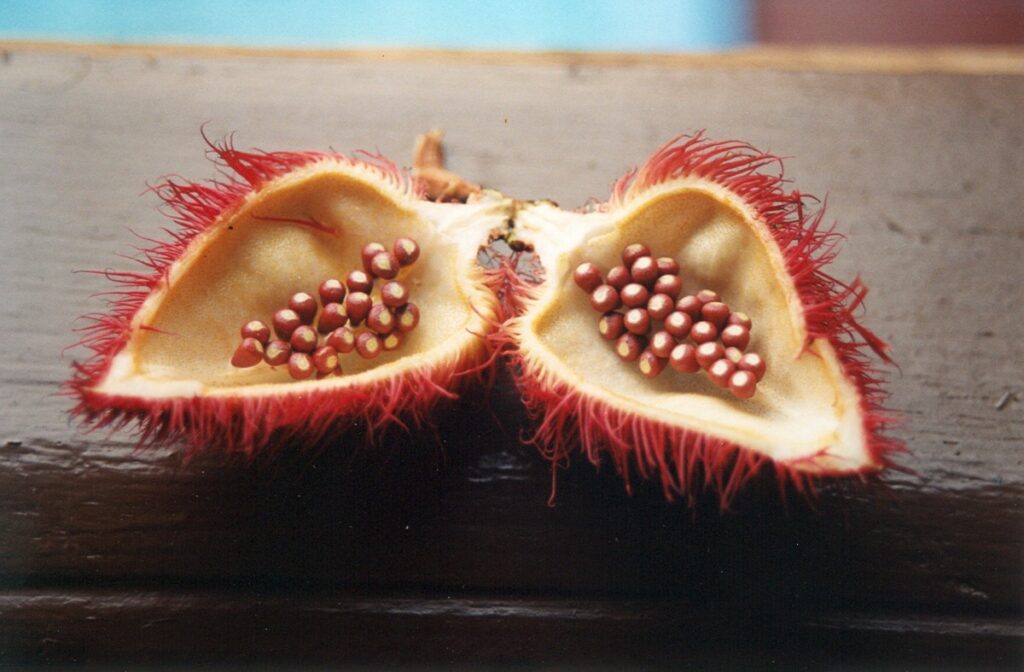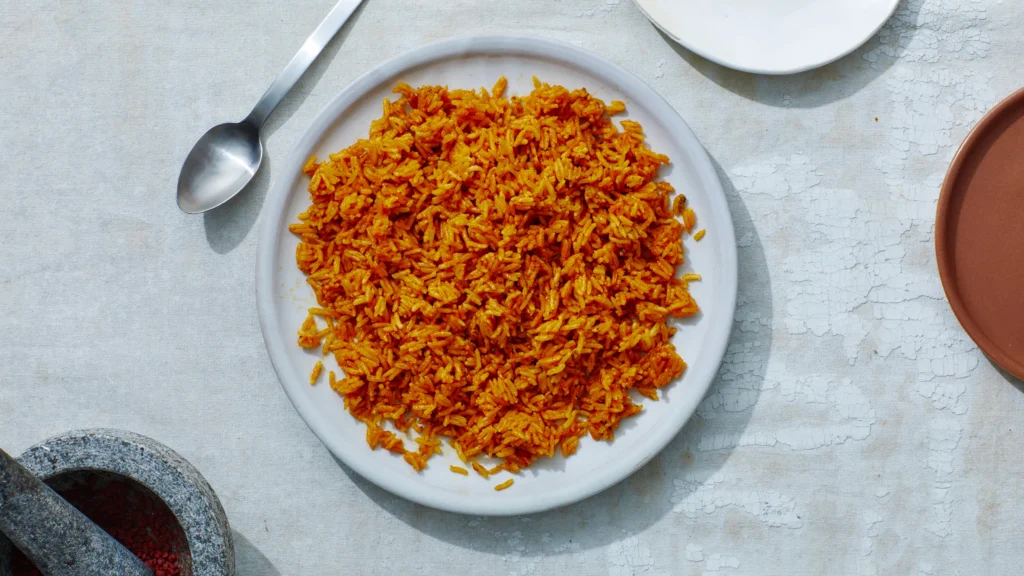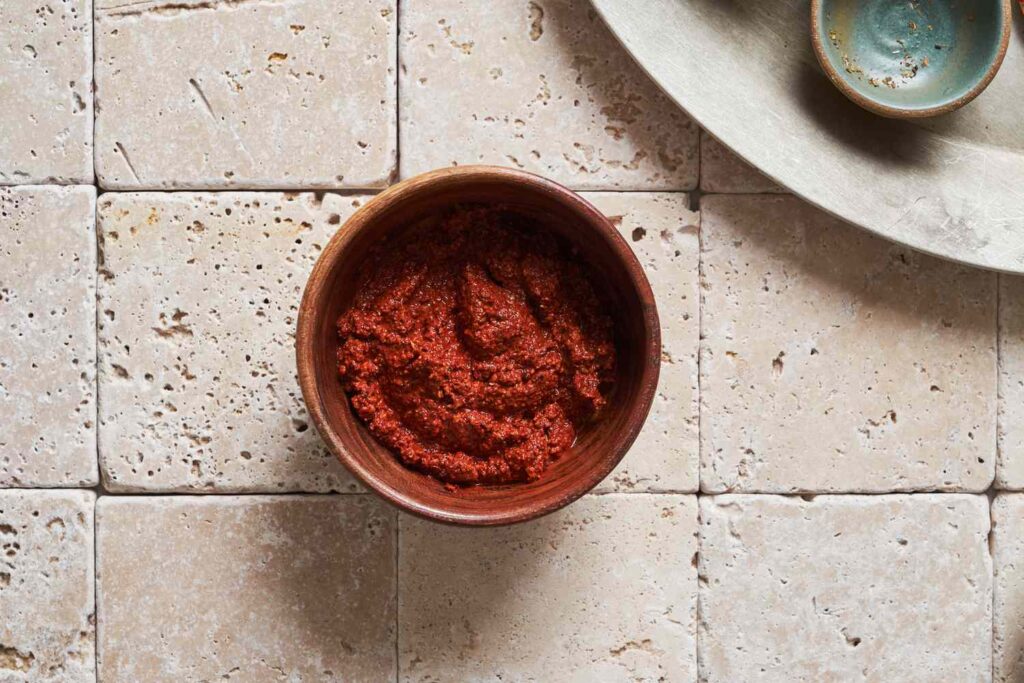When it comes to iconic Latin American flavors, few spices are as visually striking and culturally rich as achiote.
Known for its deep red hue and earthy flavor, achiote has been a cornerstone of traditional food in Mexico, Central America, and parts of the Caribbean for centuries. From ancient rituals to modern-day tacos al pastor, this powerful spice has left a vibrant mark on culinary history. But what exactly is achiote, and why does it hold such a revered place among Mexican spices?
Let’s dive in.
The Origins of Achiote

Achiote comes from the seeds of the annatto tree (Bixa orellana), a tropical shrub native to Central and South America. Indigenous peoples, including the Mayans and Aztecs, were among the first to use the seeds for multiple purposes: as a dye, medicine, insect repellent, and of course, as a food seasoning.
Historically, achiote paste was not just a cooking ingredient. The Mayans used it in sacred rituals and believed it symbolized blood and life. That deep red color? It’s thanks to a pigment called bixin, which is still used today in natural food coloring and cosmetics.
Achiote in the World of Mexican Spices
Within the diverse and flavorful world of Mexican spices, achiote stands out not just for its bold appearance but also for its ability to transform dishes. It’s commonly sold in two forms: as whole seeds or ground into a paste, often combined with garlic, vinegar, and other seasonings.
This paste is the secret behind the rich, tangy marinade used in cochinita pibil, a beloved Yucatecan pork dish that slow-cooks meat to perfection in banana leaves. Achiote is also responsible for the signature flavor and color of tacos al pastor, where pork is marinated in a mixture of achiote, chili peppers, and pineapple juice before being roasted on a vertical spit. When blended with other Mexican spices like cumin, oregano, and cloves, achiote creates a depth of flavor that elevates traditional food to an art form.
Flavor Profile and Culinary Uses

So, what does achiote taste like? On its own, the flavor is slightly nutty, peppery, and earthy, with just a hint of bitterness. It doesn’t pack a lot of heat, making it a versatile spice for a wide range of dishes.
Achiote is primarily used for:
- Marinades and rubs: Combined with citrus juice or vinegar, achiote paste is ideal for tenderizing meats.
- Rice and stews: It adds a warm color and subtle flavor to rice dishes, soups, and stews.
- Coloring agent: Beyond flavor, achiote is a natural dye that gives foods a vibrant red-orange tint.
Thanks to its vivid color, achiote is often mistaken for being spicy, but it plays more of a background role, letting other Mexican spices shine while rounding them out with its own earthy undertones.
Health Benefits and Nutritional Value
While achiote is primarily celebrated for its culinary uses, it also brings a few health perks to the table. The seeds contain antioxidants and anti-inflammatory compounds. In traditional medicine, achiote was used to treat various ailments like fevers, skin conditions, and digestive issues.
It’s also rich in tocotrienols, a type of vitamin E that may help reduce oxidative stress and support heart health. While you probably won’t get a huge dose of nutrients from the small amounts used in cooking, it’s nice to know your favorite traditional food may come with some added benefits.
How to Cook with Achiote at Home

Curious about using achiote in your own kitchen? Here are a few tips to get you started:
- Buy a quality paste: You can find pre-made achiote paste at Latin markets or online. Look for one with minimal preservatives for the most authentic flavor.
- Make your own: Grind annatto seeds with garlic, cumin, oregano, vinegar, and orange juice for a homemade marinade.
- Pair with bold flavors: Achiote works well with pork, chicken, seafood, and even tofu. Pair it with citrus, chili, and garlic for a balanced dish.
- Don’t overdo it: A little goes a long way. Start small and adjust to taste.
Whether you’re making tacos, roasting a whole chicken, or flavoring up some rice, achiote adds both visual appeal and a unique layer of taste.
Cultural Significance in Latin Cuisine
Achiote is more than a spice—it’s a cultural emblem. Its presence in Latin American cooking ties together a shared heritage of flavor, tradition, and resilience. Every bite of food seasoned with achiote tells a story: of ancient civilizations, colonial transformations, and generations of cooks preserving their roots through traditional food.
It’s not uncommon to see families in Mexico pass down their achiote-based recipes from abuela to nieta, keeping alive a vibrant culinary lineage. Among Mexican spices, it holds a place of pride that reflects a deep connection to land, identity, and history.
Taste the Tradition with Incloodie Food Tour
If this deep dive into achiote has sparked your curiosity and appetite, why not experience the flavor for yourself? At Incloodie Food Tour, we bring the world of traditional food and Mexican spices to life, one delicious bite at a time.
Our expertly guided food tours are more than just meals—they’re immersive cultural experiences. From street tacos bursting with achiote-marinated meat to hidden gems serving age-old family recipes, you’ll taste the full spectrum of Latin American flavor.
Ready to spice up your culinary journey? Book your Incloodie Food Tour today and discover why achiote is more than just a spice—it’s a story waiting to be savored.

